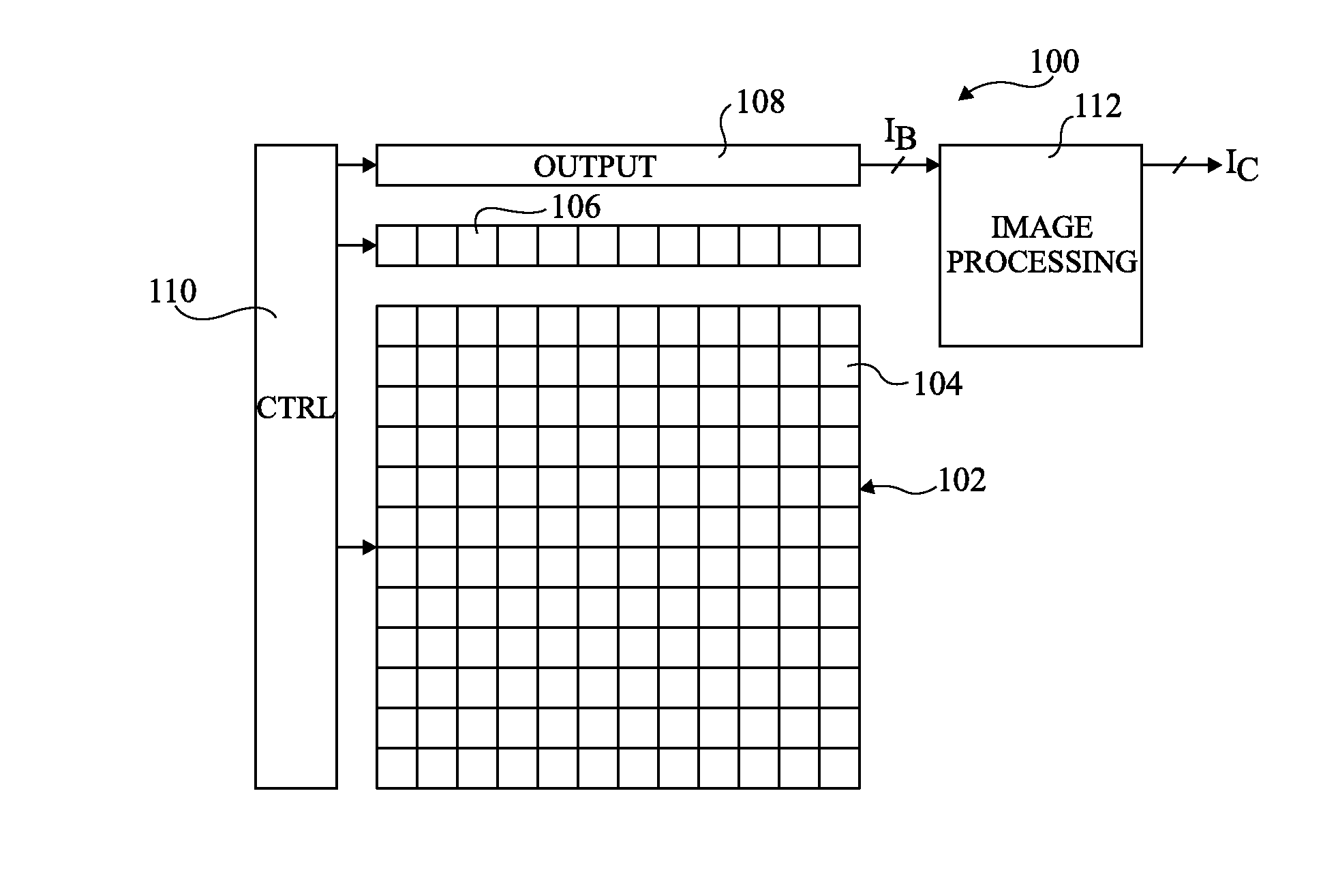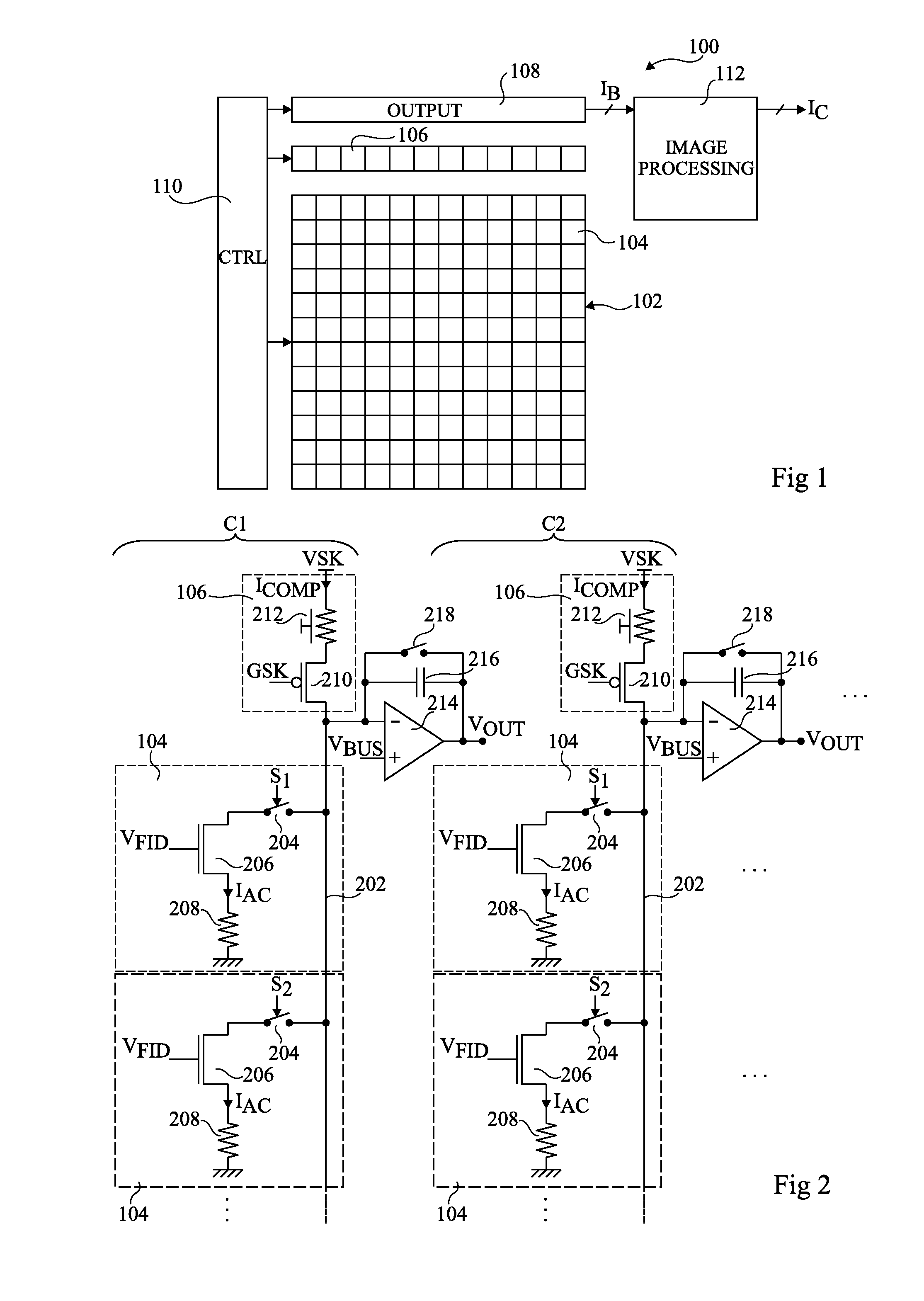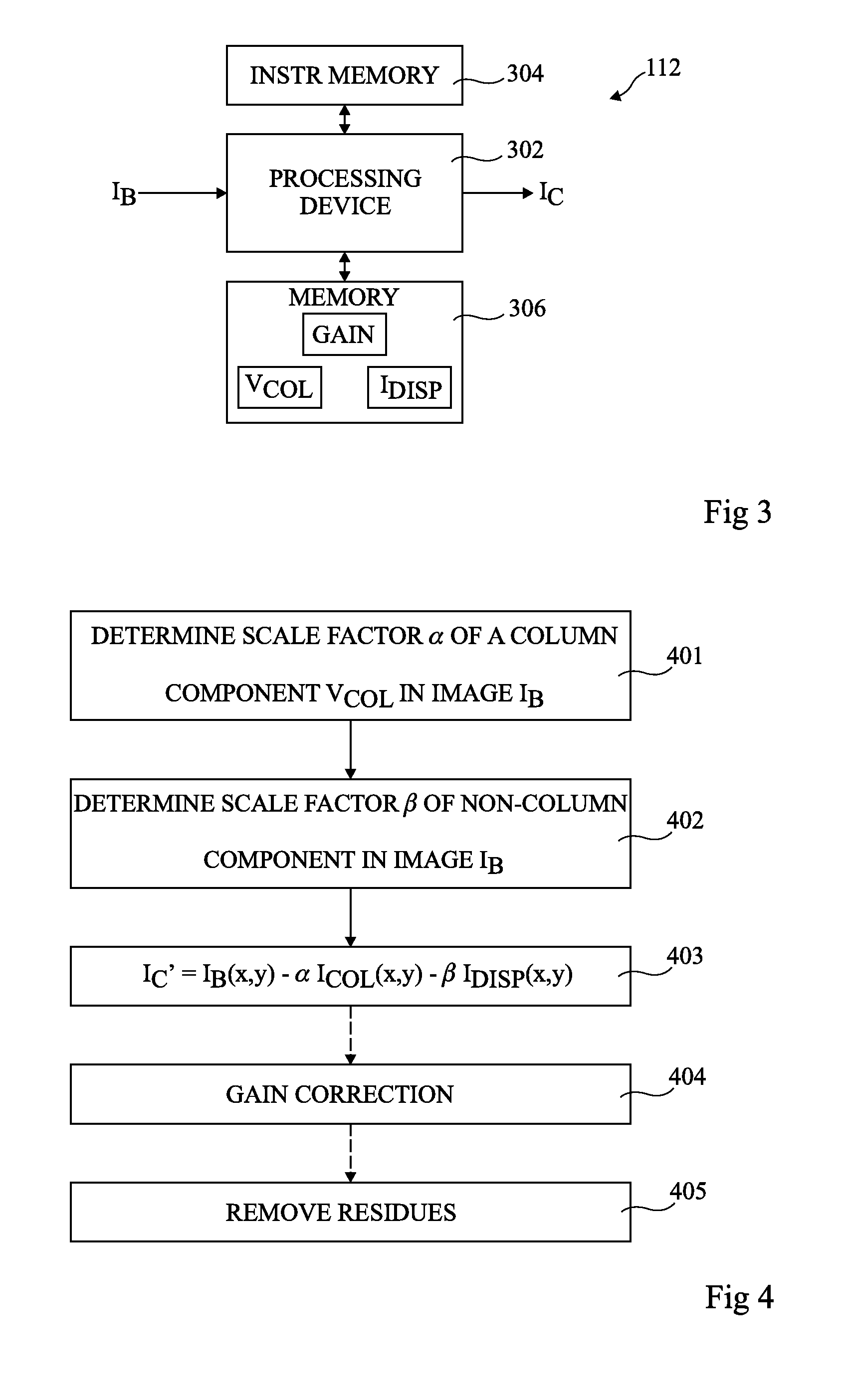Method of infrared image processing for non-uniformity correction
a non-uniformity correction and infrared image technology, applied in the field of infrared image sensors, can solve the problems of inability to use a shutter, increased weight and cost, and inability to meet the requirements of the measurement,
- Summary
- Abstract
- Description
- Claims
- Application Information
AI Technical Summary
Benefits of technology
Problems solved by technology
Method used
Image
Examples
Embodiment Construction
[0037]While some of the embodiments in the following description are described in relation to a pixel array of the microbolometer type, it will be apparent to those skilled in the art that the methods described herein could be equally applied to other types of IR imaging devices, including cooled devices.
[0038]FIG. 1 illustrates an IR imaging device 100 comprising a pixel array 102 sensitive to IR light. For example, in some embodiments the pixel array is sensitive to long-wave IR light, such as light with a wavelength of between 7 and 13 μm.
[0039]For ease of illustration, a pixel array 102 of only 144 pixels 104, arranged in 12 rows and 12 columns, is illustrated in FIG. 1. In alternative embodiments the pixel array 102 could comprise any number of rows and columns of pixels. Typically, the array for example comprises 640 by 480, or 1024 by 768 pixels.
[0040]Each column of pixels of the array 102 is associated with a corresponding reference structure 106. Though not functionally a p...
PUM
 Login to View More
Login to View More Abstract
Description
Claims
Application Information
 Login to View More
Login to View More - R&D
- Intellectual Property
- Life Sciences
- Materials
- Tech Scout
- Unparalleled Data Quality
- Higher Quality Content
- 60% Fewer Hallucinations
Browse by: Latest US Patents, China's latest patents, Technical Efficacy Thesaurus, Application Domain, Technology Topic, Popular Technical Reports.
© 2025 PatSnap. All rights reserved.Legal|Privacy policy|Modern Slavery Act Transparency Statement|Sitemap|About US| Contact US: help@patsnap.com



